Odoo Timesheet Management
Throughout the day, when employees work on one project or another, they add a line to the timesheets with details of the time used on each project. At the end of the day, each employee must mark all the time worked on client or internal projects to make up the full number of hours worked in the day.
The timesheet system is not intended to be a disguised attendance form. There is no control over the service times and the employee is free to encode 8 or 9 hours or more of services each day if they want. The objective here is not to control hours, because the employees decide for themselves what they will be entering – but to track the tasks running and the allocation of costs between them is the responsibility of the management.
Below are the various features of Odoo Timesheet Management.
- Get an overview of employee’s timesheet and approve them
- Easily manage your activities of the day
- Manage Employees and their utilization
- Monitor Employee’s performance by project or by the task
- Get Statistics about billable hours, billable amounts
- Comparing the hours really used on a project with the initial planning estimates
- Automatically invoicing based on the service hours provided
- Knowing the costs needed to run the company, such as the marketing costs, the training costs for a new employee, and the invoicing rates for a client
- Helps to organize your employee’s workload by assigning them tasks and projects
- Enabling tracking of the true costs of a project by accounting for the time used on it,
- Tracking the services provided by different employees
- Obtaining a list of the service hours for a given client
- Easily review your employee’s performance by measuring the profitability of their projects
Timesheet Management workflow
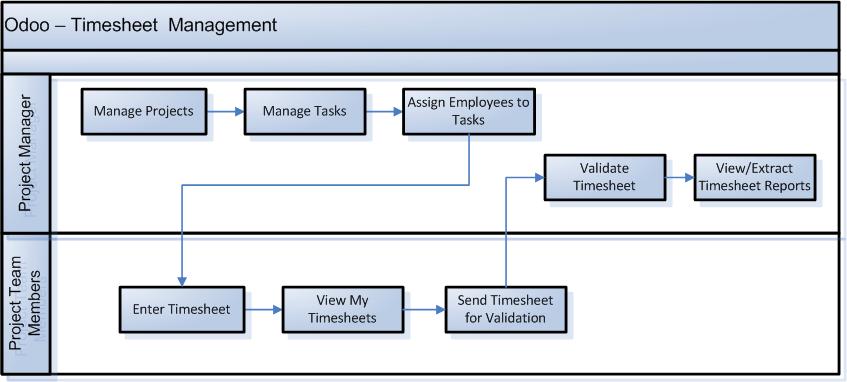
Timesheet – My Timesheet
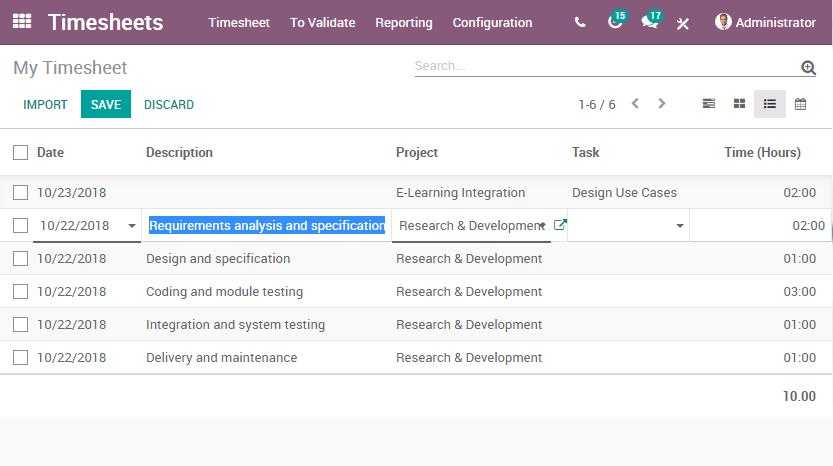
All Timesheets
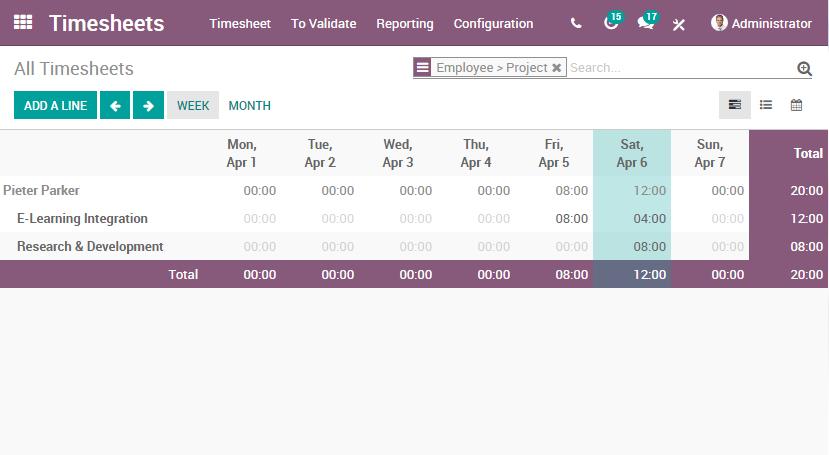
Validated Timesheet
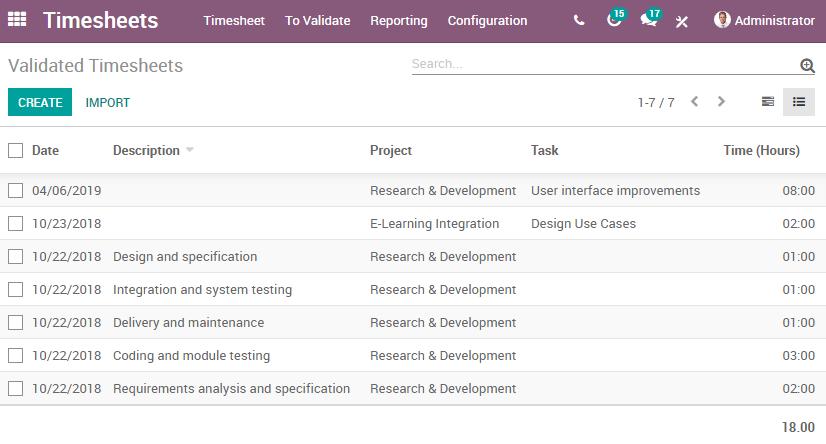
Timesheet – Mobile App
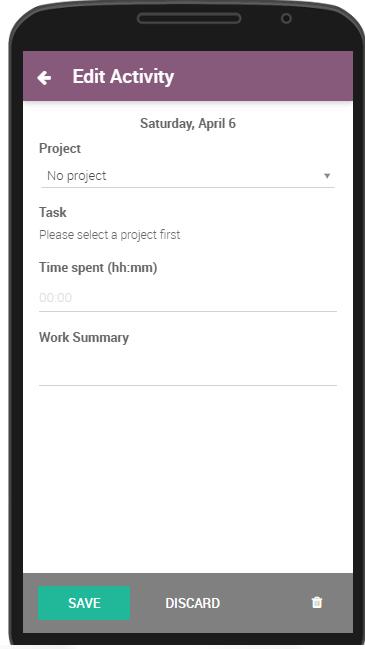
Timesheet Report – By Project and Resource
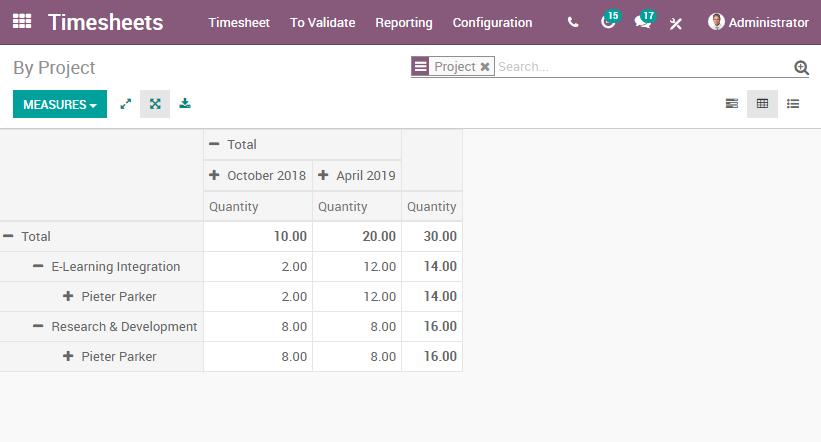
Timesheet Report – By Task
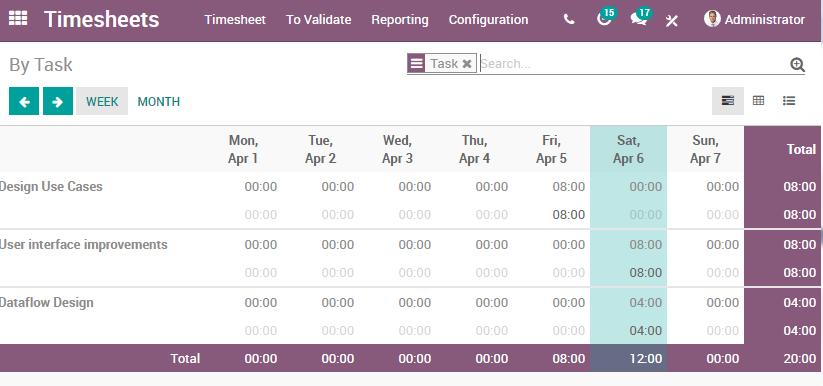
-
Pingback: Workforce management system with Odoo
-
Pingback: Employee Timesheet handled by Odoo ERP
